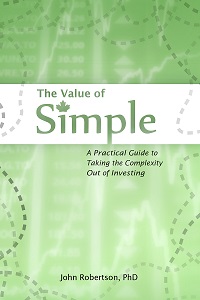Rogers – RCI.B
March 8th, 2011 by PotatoI’ve talked a lot in the past about Rogers from the customer’s point of view, so now I’ll flip that around and try to look at it as an investor, given the recent share price weakness.
In the past, I’ve never liked Rogers as an investment, without ever doing too much research: their P/E was always high, implying that investors expected a lot of growth, and I was always completely dumbfounded that the growth kept coming. Plus, you know, Blue Jays — how wise was that investment? Early on, as they were transitioning from being a cable company to a wireless company, I couldn’t believe how fast cell phone use grew, and how long it kept growing at those rates. Families were getting a cell phone for every member, a trend I was seeing with my own eyes and still not believing (I honestly thought it must just have been a Toronto thing, that surely not all Canadians could afford a cell phone). Rogers out-performed the TSX by a large margin for pretty much all of the last decade, and I kept thinking that it couldn’t continue.
I’ve still maintained my skeptical attitude towards these double-digit growth rates, despite being wrong for years running. I think I may finally be right, as if you add it up Bell, Telus, and Rogers now have between them 23 million wireless subscribers, against a population of 24 million between the ages of 10 and 65 (yes, surely some really young kids and older seniors will also have cell phones, but I have to believe that somewhere out there are a few people still without cells or who share within a family). Any future growth in net adds (above say 3-4%) will likely have to come at the expense of a competitor, and supposedly competition is heating up with the new wireless companies. I don’t know how much to fear margin compression with competition: the oligopoly of Bell, Rogers, and Telus have managed to “compete” without cutting into wireless profit margins for years, and maybe the new players will be in on the game too.
On the other hand, the markup for data services in Canada is one of the highest in the world, which leaves a lot of room for margin compression if any competition does take root, on top of any lost customer volumes as the market gets further fractionated. For comparison, the profit margin of Rogers and BCE is in the neighbourhood of 38%, but Verizon and AT&T are closer to 15%. So it’s definitely a concern, especially since Rogers doesn’t exactly have good brand loyalty.
The growth in upgrades to smartphones has been explosive, and adding data service to a wireless plan is a cash cow for a company like Rogers (smartphone customers spend ~2X as much per month). I don’t want to underestimate that, but at the same time, over a third of Rogers subscribers are already on smartphones. And competition is heating up there as Bell & Telus have only recently completed the network upgrades needed to seriously compete with Rogers for data customers (as well as getting access to the iPhone).
The cable TV part of the business is looking the weakest in my eyes: a small minority of people (like myself) have already cut off the cable, finding my TV watching needs can be met by DVD sets of my favourite shows, internet services, and over-the-air (which is all hi-def now, no need to go up like 3 packages to get the first few hi-def channels!). Fortunately, cable (TV, internet, home phone) is the smaller part of Rogers (wireless accounts for 68% of profit, cable about 30%, and TV just over half of that), and is still growing for the time being (though only 3.6% yoy in terms of revenue). Indeed, most of that growth is coming from the internet side: home phone is shrinking already, and TV was the only segment with net reductions of customers through 2009 (some came back in 2010, but I think that shows that there is weakness starting to form in the TV business). Internet should be pretty steady: hopefully UBB will go away, but they shouldn’t be getting much from that at the moment, as they’ve already driven the high-usage users off to the independents anyway. The next little while may be hairy though, as Bell & the CRTC’s UBB insanity gave the independents (and Netflix) a lot of free advertising.
There’s a touch more debt on the balance sheet than I’d like (and still growing, if slowly), and recently cash went towards share buybacks rather than debt repayments, but the maturity schedule looks well-managed.
In the end, I basically view Rogers as a utility: I don’t expect much if any growth, yet their services should have a well-supported demand with stable profits going forward (with no small amount of fear regarding competition). As such, I expect a utility-like P/E and dividend, and with the recent weakness it looks like that’s where it’s getting to. If I assume that earnings increase at about 2%/year (i.e.: about inflation, with any growth in customer base essentially offset by margin compression), and that book value is nil, I get a projected total return of about 9%/year here, using what I consider to be “fair” assumptions*. I’m not hugely thrilled with that for going out and picking something vs. just taking the market return in my indexed portfolio, but I am seriously thinking of investing in Rogers, in part for diversification (diworsification?) reasons, and in part for stupid reasons (I keep coming back to look at it, like my gut is telling me there’s something there, but that could just be because my gut likes beaten-up stocks).
* – don’t let my excel-fu instill a sense of false precision, I could see a future of anywhere from just the 4-5% dividend to 11%/year, and that’s just using some “fair” assumptions — admittedly, lower than the bottom range of “consensus” but not very conservative. Pessimistic ones about competition can make things look much worse: assuming profit margins go down to an American ~15%, then RCI would be over-valued by about a factor of two.




 Questrade: use QPass 356624159378948
Questrade: use QPass 356624159378948 Passiv is a tool that can connect to your Questrade account and make it easier to track and rebalance your portfolio, including the ability to make one-click trades.
Passiv is a tool that can connect to your Questrade account and make it easier to track and rebalance your portfolio, including the ability to make one-click trades.